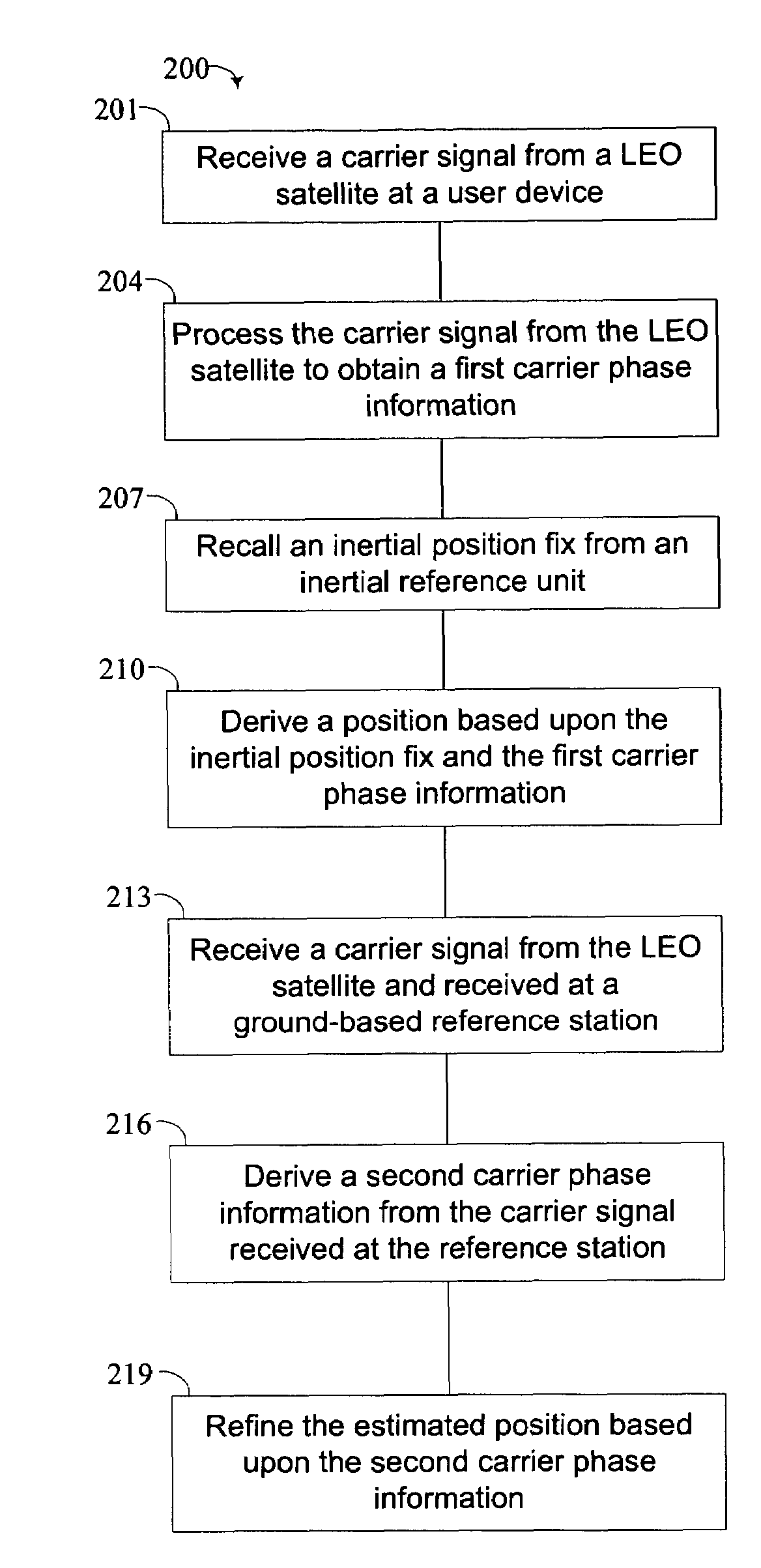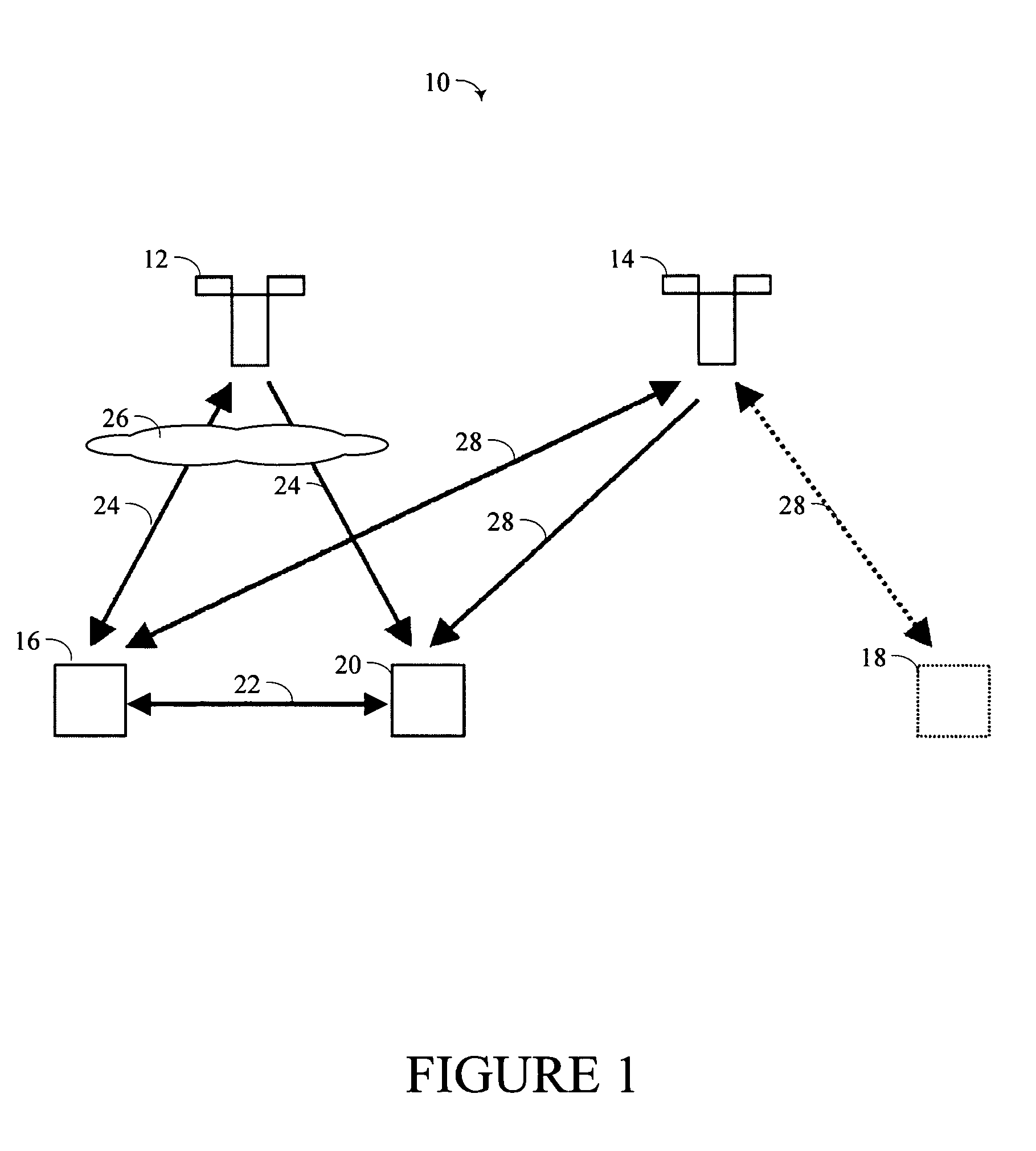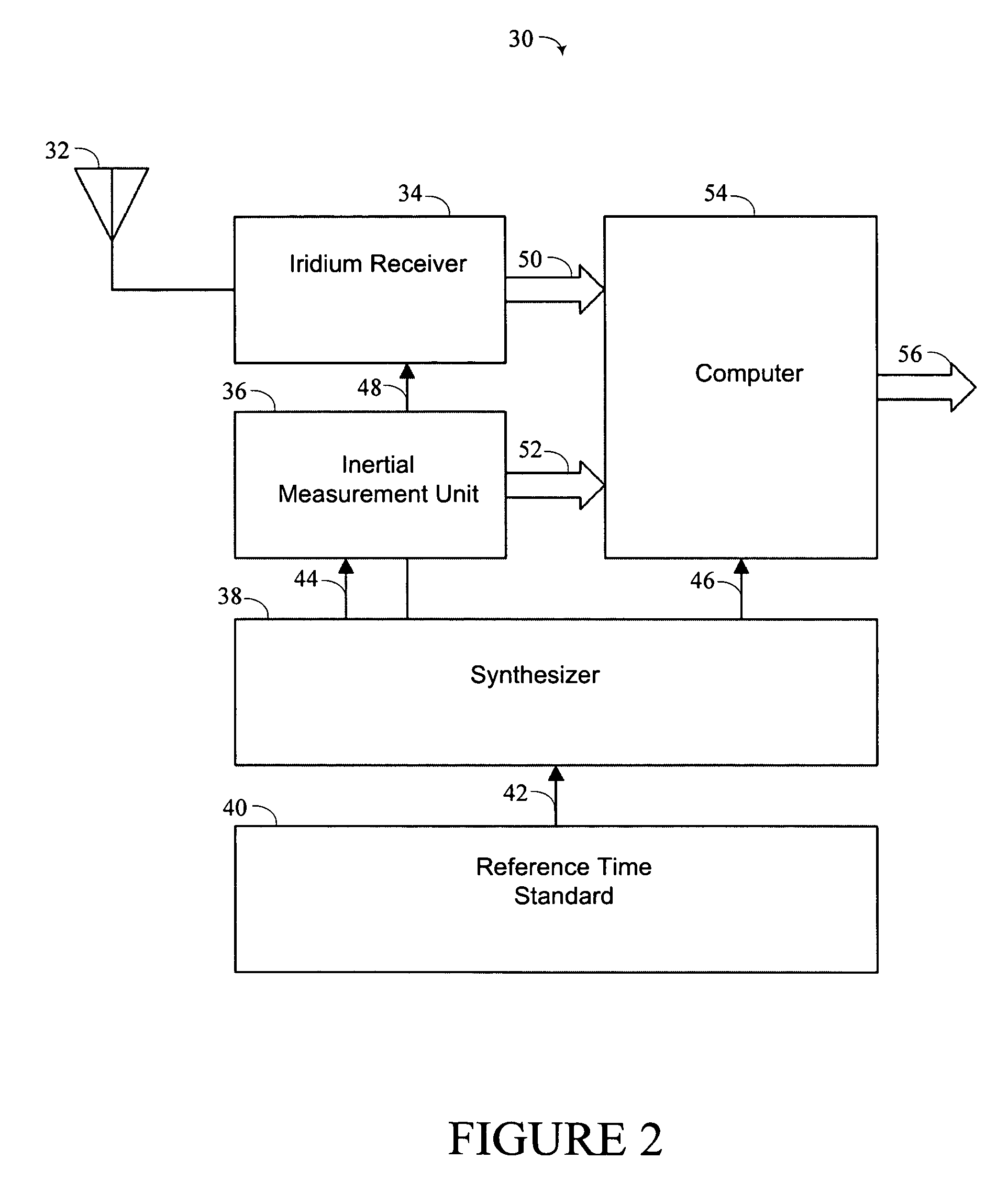LEO-based positioning system for indoor and stand-alone navigation
a positioning system and satellite technology, applied in the field of navigation, can solve the problems of insufficient power of gps to penetrate the walls of buildings, may not be available to a navigation user, and may not be able to meet the needs of navigation users, so as to improve the integration load
- Summary
- Abstract
- Description
- Claims
- Application Information
AI Technical Summary
Benefits of technology
Problems solved by technology
Method used
Image
Examples
Embodiment Construction
[0026]The present invention relates to satellite navigation. Many specific details of certain embodiments of the invention are set forth in the following description and in FIGS. 1 through 5 to provide a thorough understanding of such embodiments. One skilled in the art, however, will understand that the present invention may have additional embodiments, or that the present invention may be practiced without several of the details described in the following description.
[0027]By way of overview, a method for estimating a precise position of a user device from signals from a low earth orbit (LEO) satellite includes receiving at least one carrier signal at a user device, each carrier signal being transmitted a distinct LEO satellite. The user device processes the carrier signals to obtain a first carrier phase information. The user device recalls an inertial position fix derived at an inertial reference unit. The user device derives a position of the user device based on the inertial p...
PUM
 Login to View More
Login to View More Abstract
Description
Claims
Application Information
 Login to View More
Login to View More - R&D
- Intellectual Property
- Life Sciences
- Materials
- Tech Scout
- Unparalleled Data Quality
- Higher Quality Content
- 60% Fewer Hallucinations
Browse by: Latest US Patents, China's latest patents, Technical Efficacy Thesaurus, Application Domain, Technology Topic, Popular Technical Reports.
© 2025 PatSnap. All rights reserved.Legal|Privacy policy|Modern Slavery Act Transparency Statement|Sitemap|About US| Contact US: help@patsnap.com



